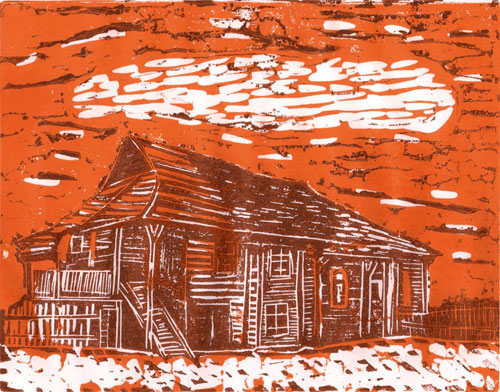Lost Treasures: The Wooden Synagogues of Eastern Europe The Artwork of Bill Farran
Połaniec, Poland - Original Linocut
Połaniec, Poland - Original Linocut
Polaniec [Pol], Plontch [Yid], Polanyets, [Rus]
In 1765, Jews were granted the privilege of residence in the town and permitted to open workshops. In the mid-18th century, the town had a synagogue, a Beit Midrash, a Talmud Torah, a Yeshiva, and many cheders. The synagogue was well known for its architecture and wall paintings.
A fire in 1929 swept through the town destroying the Beit Midrash, Mikvah and Talmud Torah, and leaving one hundred Jewish families homeless. The Jews rebuilt their homes using bricks and stones.
At the end of October 1942, the Polaniec ghetto was liquidated. Immediately after the deportation, the Nazis began to take over the abandoned properties and belongings. They destroyed the wooden houses and the newer stone houses were sold to enthusiastic Poles for token sums. Soon after, the Poles began intensive searches for hidden valuables, digging in the courtyards and all other places.
The wooden synagogue, which had stood for five hundred years, was sold to the local Germans, who dismantled it and used it for firewood.
Purchase a print
Original linocut prints are 8x10 inches, and are available either unmatted or in an 11x14 matte.
I also offer matted 5x7 digital prints. These prints are created from high-res digital images and come in an 8x10 matte.
